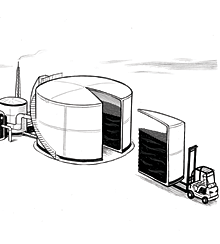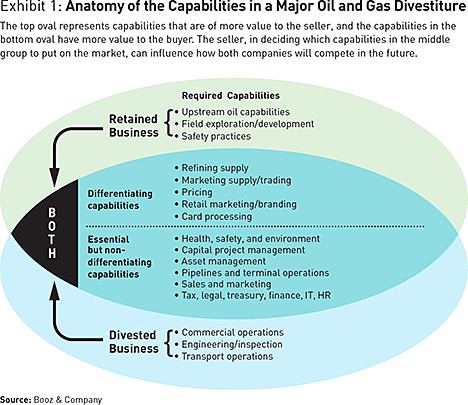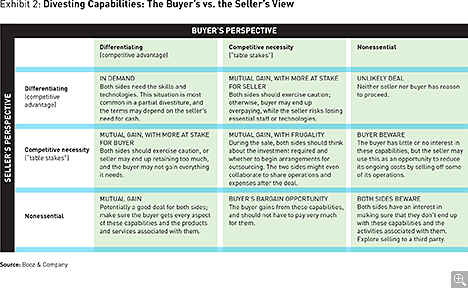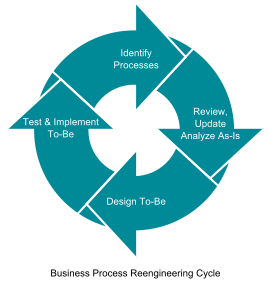When you are selling part of your company, don’t just offer buyers a potential asset; give them the capabilities to gain value from it.
strategy+business magazine:
... Business strategy is always intertwined with capabilities. A capability is the combination of processes, tools, knowledge, skills, and organizational design needed to deliver a specified outcome. Thus, although most M&A departments spend much more time thinking about the sale price, attention to capabilities can make a major difference in a deal’s outcome.
For example, when you sell major assets, you can often maximize the deal price by identifying buyers with capabilities systems of their own that are a good fit. ... They are often willing to pay big premiums to complete the deal—and with good reason. Deals that leverage a buyer’s existing capabilities typically fare well (see “The Capabilities Premium in M&A,” by Gerald Adolph, Cesare Mainardi, and J. Neely, s+b, Spring 2012).
But maximizing price is only one of four major goals in a divestiture. The others are minimizing any disruptions to your retained businesses, keeping capabilities away from particularly strong competitors (which might mean turning down a deal that is favorable in other respects), and handing the buyer something that can be operated successfully from Day One. Your motive is not altruistic; in M&A, it is generally in a seller’s interest to minimize the length of entanglement, and to establish a reputation as a good partner for making deals.
... The leaders of any company divesting assets must deal smartly with capabilities issues or risk having the deal fall short.
Differentiating Divestiture
As a seller, you should begin your divestiture process by identifying the desired end state for the important capabilities involved: those you will still need after the deal is done, those you won’t need, and most importantly, those that both you and the buyer will need (see Exhibit 1). In each group, some capabilities are “table stakes”—every company in the industry needs them—whereas others are truly differentiating. The latter can distinguish your company in the market and give you an advantage over competitors. These capabilities require the most attention during a divestment, and you should seek to keep them intact while enabling the buyer to benefit from the deal in every other way (see Exhibit 2).
In practice, most sellers, facing the pressure of time, end up having to choose which capabilities to focus on. Your goal is to keep the process moving without sacrificing the quality of your decision making or jeopardizing the outcome.
There are certainly divestitures in which the buyer is known from the beginning, but it is not uncommon for a company to decide to divest something just because it no longer fits strategically, announce this plan publicly, and then search for a buyer. In these cases, major portions of a divestment plan must be executed before a buyer has been identified, and certainly before the transaction has taken place. This adds to the challenge.
There are also partial divestitures ..., in which only some assets of a given business or parts of an asset are sold. A partial divestiture is often more complicated from the standpoint of capabilities, because of the seller’s need to hold on to some people, processes, and technologies that it could let go of if it were selling an entire business or product line.
To make the process of divestiture more manageable, we recommend five steps. Each step gains its power from how it builds on previous steps, helping sellers during the critical period—usually lasting up to 18 months—when they are readying assets for sale. Note that these steps focus only on the analyses and business process changes that are relevant to managing the capabilities you are divesting. ...
Step 1: Capability Scoping
In the first step, you set the overall strategy for the divestment—including the assets you want to sell, when you want to sell them, and to whom. This takes place through an exercise called “capability scoping,” in which you take stock of the most important capabilities associated with the assets you are putting on the block. Often what’s up for sale is not a stand-alone business unit but ... a product, service, or asset that sits within that business unit. It likely draws on capabilities that are centralized within the company or that are used by other parts of the business unit (and therefore can’t be offered as part of the deal). This step usually precedes the identification of a buyer and should be done before any transaction-related activity, such as planning an auction. ...
Often, the seller realizes there isn't time to address every capability on its list, and it must set some priorities. ...
Undoubtedly there is a set of analogous activities at your company, drawing on people and technologies that are dispersed throughout the organization. A scoping exercise in and of itself isn't a plan for divesting assets—it doesn't answer the question of how to ensure the integrity of differentiating capabilities. But it does lead to a hypothesis of what will have to be accounted for, and either added to or carved out of an asset, in the months leading up to a divestiture.
Step 2: Baseline Analysis
This step involves understanding the components of key capabilities and how they come together to enable products and services to be successful. The idea is to break down those activities into their constituent parts—
what the activities consist of, who performs them, where in the company they are performed, how long they take, what technologies make them possible, and what problems are associated with them.
| English: Business Process Reengineering Cycle (Photo credit: Wikipedia) |
The baseline analysis identifies exactly what you can let go of and what you need to keep—and illuminates where a new owner might be left with a gap.
Not all buyers have gaps. Some may have capabilities systems that are a better fit for the assets you’re selling than your own capabilities are. In other cases, the ability of your activities to fill the buyer’s gaps becomes a point of negotiation in the deal—factoring into the price, the time to completion, or the transition services that you must provide. If no buyer has yet been identified, this is your chance to formulate a clear picture of the value that your divested assets might hold for someone else.
Completing a baseline analysis of your capabilities is more difficult than it might seem. The problem is that most people in a company—even, and sometimes especially, those with special talents or important functional roles—have a narrow view of what underpins a business’s success. The salespeople will describe the differentiating capabilities in one way, the marketing people in another, and the product development people in a third. From up close, and amid the competing perspectives, it can be hard to tell which activities truly make a difference. You may need to weigh all these inputs dispassionately—and pull back to get a wider perspective.
Step 3: Option Analysis
In this step, having identified one or more potential buyers, you look closely at the buyer’s capabilities needs and how your assets can help fill those gaps. This enables you to maximize the value of the deal. ...
The information uncovered during this step may prompt you to revisit a previous step. ...
Step 4: Transition Planning
Having identified the gaps and decided how to fill them, you as the seller now must start carving out the asset and making sure it has the capabilities it will need. This involves the creation of detailed project plans—perhaps one for each of the major capabilities involved—and of work teams.
Where to begin? At this stage, there is still no guarantee of who the buyer will be. Focus on activities that need to be conducted for any buyer. This forces you to tend to the known things first, as opposed to doing what comes more naturally and tending to the biggest things first. This approach can speed a sale once a buyer has been identified—and even if you don’t sell the asset, in the end, you won’t regret the planning effort. ...
Step 5: Buyer Engagement
Once you have a definite buyer and a signed contract, you can flip the switch on all the plans you have been making in Steps 1 through 4. Begin by sharing your thinking with the buyer, including which capabilities you see as most important and what your plans are for transferring them. Describe how you will deliver a fully functioning business to the buyer. The buyer has its own market strategy, quite possibly different from yours, and may have a different view of which capabilities are important. These differences sometimes lead the buyer to ask for something you don’t expect. That’s another reason not to start on this stage prematurely: That early work might have to be discarded. ...
Preparation, Skills, and Pride
Divestitures can be some of your company’s most complex transactions. They require strategic thinking, a massive amount of contingency planning, and—once a certain point is reached—the simultaneous management of multiple work streams and projects. You will need to be flexible and ready for the unexpected. This checklist can help you get ready for the process:
- Do you have a clear sense of what you’d like to sell, what you think it’s worth, and what capabilities might be involved?
- Do you know when you’d like to complete a transaction, and do you have a rough sense of the time line leading up to that?
- Do you have a list—if not by name, then by type of company—of who might be interested in your assets?
- Do you have a clear sense of how the sale will affect capabilities you’ll need for your retained businesses or assets?
- Do you have a dedicated transaction team, and if so, does the team have a clear set of priorities?
- Do you have measures in place to track your progress? Do you have clear measurements for the success or failure of the transaction?
The skills you develop during this process aren't relevant just to divestitures. They can also be used to reduce risk; create value; and improve the outcomes of acquisitions, spin-offs, and portfolio restructurings. Your work on divestitures can span organizational boundaries, geographies, business units, and functions, and thus help you develop the structures and communications links you need for other complex initiatives. The focus on capabilities involves accounting for factors that are often overlooked. It can help you avoid the tunnel vision that often accompanies a singular focus on financial matters during major transactions—and that can keep you from seeing the broader strategic impact of your decisions in general.
Many companies pride themselves on their ability to use acquisitions to drive inorganic growth. It’s far more rare to find a company that prides itself on the way it divests a business or asset. That’s understandable; by their nature, divestitures focus on businesses or assets that once seemed promising but no longer fit with where the seller is heading. It isn't surprising that there would be a mind-set of “the sooner, the better” and a narrow focus on the price. If you use the filter of capabilities, the divestiture might take a little longer, but it can leave your company better off in the ways that matter most. 
Reprint No. 00208
AUTHOR PROFILES:
- Eduardo Alvarez is a Booz & Company partner based in Chicago. He leads the firm’s global operations practice and is an expert in business process transformation and technology-enabled transformation.
- Steven Waller is a Booz & Company principal based in Chicago. He specializes in technology strategy and the development of new operating models for energy and financial-services companies.
- Ahmad Filsoof is a Booz & Company senior associate based in Chicago. His focus is on operations, business process transformation, and technology-enabled transformation in the energy industry.
- Also contributing to this article was consulting writer Robert Hertzberg.
'via Blog this'














No comments:
Post a Comment